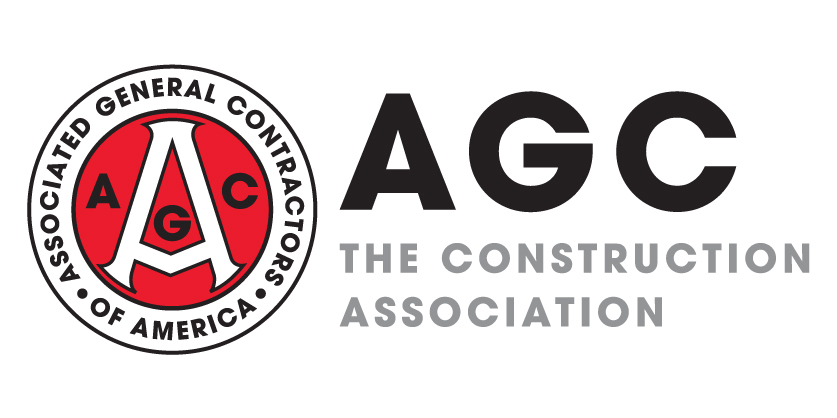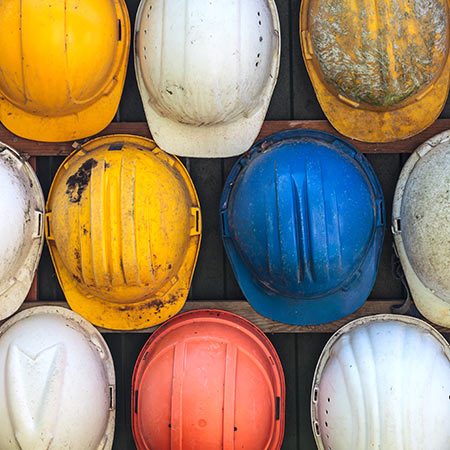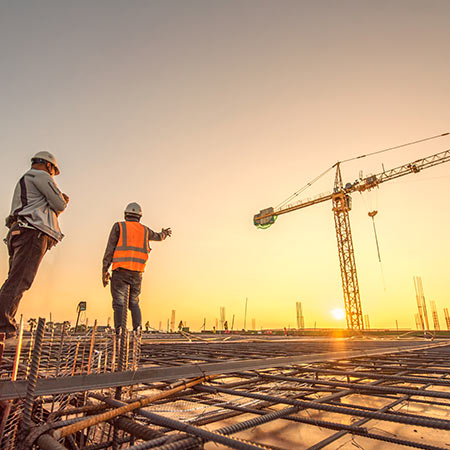
Construction spending fell 2.9% from March to April at a seasonally adjusted annual rate to a five-month low of $1.346 trillion, the Census Bureau reported today. Spending declined from March in 10 of the 12 public construction categories and 10 of the 11 private nonresidential categories in Census’s press release. Overall, public construction spending slid 2.5% from March to April, private nonresidential spending slipped 1.3%, and private residential spending tumbled 4.5%. Among the three largest public segments, highway and street construction fell 5.2%; educational, -2.3%; and transportation (transit, rail, airports and ports), -1.4%. In descending order of April spending, the largest private nonresidential segments were power (electric plus oil and gas field and pipeline construction), down 1.1% from March; commercial (retail, warehouse and farm), -2.3%; manufacturing, 0.2%; and office, -0.1%. New single-family spending plunged 6.6%, and new multifamily, -9.1%. Residential improvements were unchanged.
Census on Thursday released the results of its fourth Small Business Pulse Survey, with responses from May 17 to 23, that “is intended to provide crucial weekly data on the impact of the COVID-19 crisis on the nation’s businesses.” As before, construction firms fared slightly better than the all-industry average in terms of adding to headcount during the week (11.2% of construction respondents vs. 9.2% overall) or shrinking it (14.7% vs. 15.8%). As with the survey AGC released on May 22, the share of firms that added employees has risen over the past month, while the share with shrinking headcount has fallen. In the latest Census survey, supply-chain disruptions affected 37.8% of construction firms, down from 42.6% in the initial (April 26-May 2) survey. The share of construction respondents that closed a location for at least one day fell to 21.7% from 33.8% in the initial survey. More construction firms than in the initial survey reported “little or no effect on…usual level of operations” (12.5% vs. 10.7% initially) but fewer predicted a return to usual level within one month or less (5.5% vs. 6.9%) or 2-3 months (20.4% vs. 30.6%). The most common expectation in the latest su rvey was that returning to usual level would take more than six months (33.6% vs. 23.8% initially).
“Economic activity declined in all districts—falling sharply in most—reflecting disruptions associated with the COVID-19 pandemic,” the Federal Reserve reported on Wednesday in the latest “Beige Book,” a summary of informal surveys of businesses in the 12 Fed districts from early April to May 18. (Districts are referenced by the names of their headquarters cities.) Construction activity “fell as new projects failed to materialize in many districts. Commercial real estate contacts mentioned that a large number of retail tenants had deferred or missed rent payments….Contacts cited challenges in bringing employees back to work, including workers' health concerns, limited access to childcare, and generous unemployment insurance benefits. Overall wage pressures were mixed as some firms cut wages while others implemented temporary wage increases for essential staff or to compete with unemployment insurance. Most districts noted wage increases in high-demand and essential sectors, whi le wages were flat or declining in other sectors.” One “district noted that the costs of personal protective equipment had risen due to strong demand.” District-specific comments relevant to construction included the following. Chicago: “Nonresidential construction activity decreased moderately as most existing projects continued.” St. Louis: “Contacts reported clients have suspended or delayed commercial construction projects. Contacts also reported difficulties with the construction process due to supply chain issues and increased safety costs.” Minneapolis: “Commercial construction fell since the last report. An industry tracker of construction projects showed a modest dip in activity in April and early May. But other sources suggested a bigger decline. More than two of three respondents to a mid-May survey of Minnesota construction firms said they have had recent or future projects canceled, and an even higher share have seen other projects delayed. Respondents a lso reported a reduced number of new projects out for bid.” Kansas City: “Residential and commercial construction activity declined modestly.” Dallas: “capital for new development has mostly dried up as investors take a wait-and-see approach.” San Francisco: “Commercial construction activity declined notably throughout the District.”
Engineering and construction costs fell in May, IHS Markit and the Procurement Executives Group reported on Wednesday. “The current headline [index] registered 38.2 in May, a slight increase over last month’s figure of 34.9, but still well below the neutral mark of 50, indicating falling prices. The materials and equipment portion of the index came in at 35.0 with the subcontractor portion at 45.7. The materials and equipment sub-index recorded the third consecutive month of falling prices. Survey respondents reported falling prices for nine out of the 12 components with only ready-mix prices increasing. Ocean freight (from Asia to the United States and Europe to the United States) prices stayed flat. Index prices for fabricated steel, alloy steel pipe and carbon steel, copper wire and cable were higher relative to April, though still in contraction territory in May, illustrating that although the majority of respondents noted falling prices, there were few responders who registered price increases. On the other hand, index figures for equipment fell relative to April, with falling prices more widely observed in these categories. ‘The widespread declines in equipment prices reflect broad energy industry trends as low oil prices have forced companies to reduce spending, especially on new projects,’ said Thomas McCartin, senior economist at IHS Markit. ‘This had led to lower equipment demand from engineering, procurement and construction firms that build infrastructure and refining facilities in the energy industry.’”
“Construction material pricing has stayed pretty consistent except for a few items,” New South Construction Supply reported on Thursday. “Rebar [, wire mesh and poly sheeting] continued to remain flat from April’s report.” Southern yellow pine lumber and plywood are “seeing an increase….There were no other major building material manufacturer price increases in May.”




